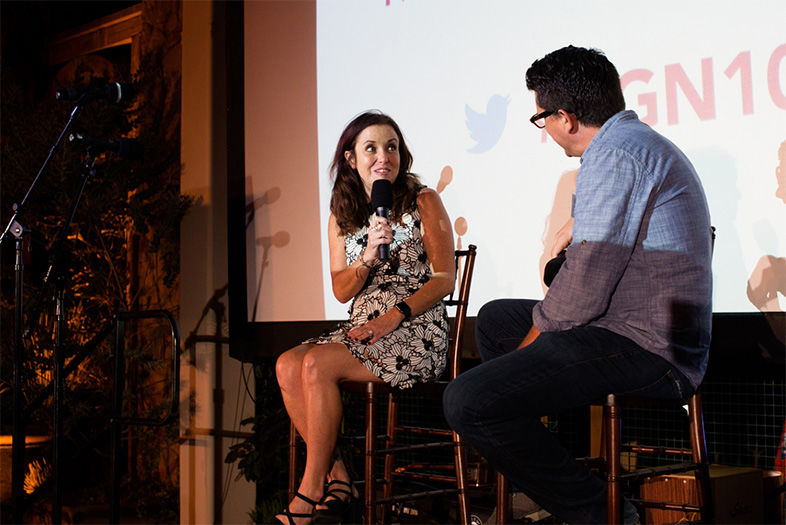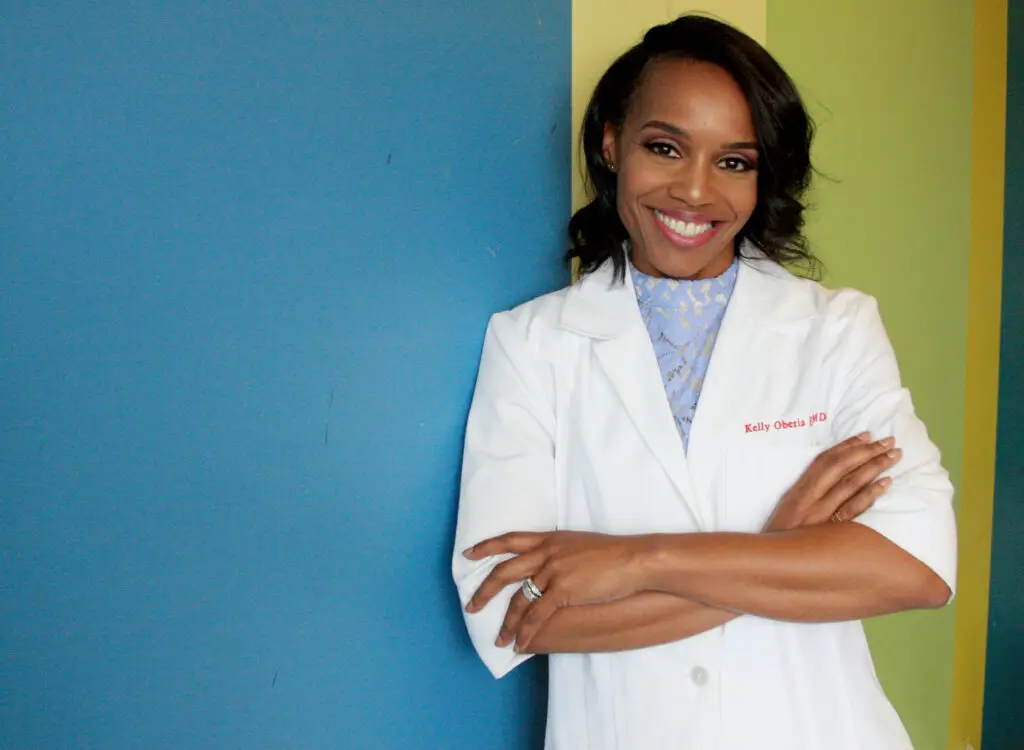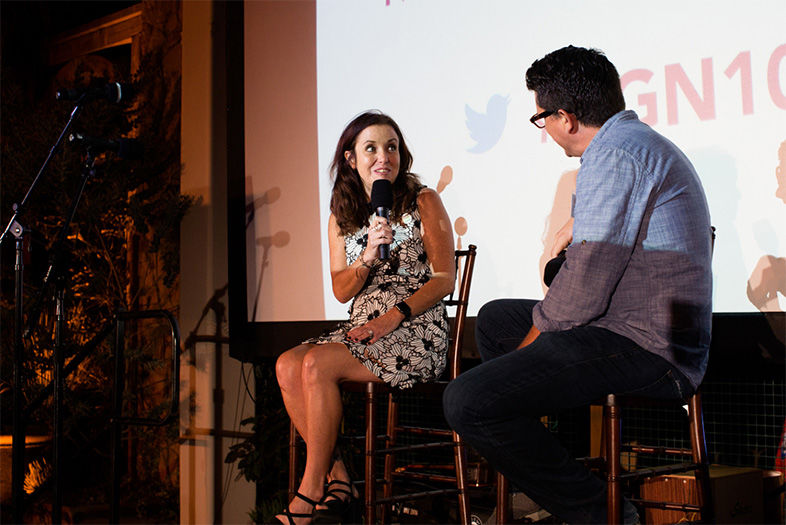There are doers, and there are thinkers, and every cultural endeavor needs a healthy dose of both. Let’s take food, for example. If you’re busy running a farm, you’re working to the bone, often long after the sun goes down. You might even want to clean your fingernails and kiss your spouse for a couple minutes. With such a demanding to-do list, it’s tough to focus on improving the overall food system.
That’s why we have analysts and researchers and TedX conferences and summits. We have independent people deeply analyzing specific parts of every industry, and supplying facts/research/ideas to the “doers.”
In the food industry, one of the biggest thinker success stories has been Food Tank, a four-year-old think tank co-founded by Danielle Nierenberg. After getting her BA in environmental studies and a Masters in agriculture, food, and environment from Tufts, she hit the Peace Corps to work with farmers in the Dominican Republic. She followed with a decade-plus stint at the Worldwatch Institute as a senior food and agricultural researcher, and eventually director, studying hunger and poverty through 30 Sub-Saharan African continents.
In 2013, she took $6,000 of her savings and formed Food Tank with her partner, Bernard Pollack. Through talks, their website, social media, books, and contributions to media outlets from the New York Times to CNN to, well, just about everywhere—Food Tank has worked to spread the word, research, discussion, and potential solutions for problem areas in the global food chain (overfishing, crop diversity, industrial meat, hunger, gender inequality, obesity, nutrition, you name it).
Foodtank.com has become a one-stop shop for all relevant research and progressive ideas on how to improve the global food sphere.
Their Food Tank Summits—discussions pulling top food minds from around the country into the same room to brainstorm certain issues—have been hugely popular. Think of it like a TedX conference with a focus on what, when, how, and why we eat what we do. This past summer, their food waste summit in NYC sold out.
And now, after urging from Michelle Lerach and San Diego’s Berry Good Foundation (BGF, a local food think tank), Nierenberg has agreed to hold the first Food Tank Summit in San Diego on Oct. 24 and 25, 2018. Nierenberg was in town a couple weekends ago as a speaker for BGF’s annual fundraising event. I spoke with her about some of the basic philosophies that make her get up and go.
What does Food Tank do?
Our job is to inform and provide information. In addition to writing and researching original stories—we’re collaborating on research reports with other nonprofits. I’m taking a big trip to Sub-Saharan Africa soon. We’re also trying to get people with different expertise to talk. It’s getting nutritionists to talk to farmers. Talk to retailers. They’ve been doing their own work and working in food and ag, but they haven’t been talking to each other.
The food system is much more than stats. But stats are impactful. Which ones do you pull out to help illuminate the problems we’re facing?
We waste 1.3 billion tons of food every year. And yet 810 million people are hungry. 2.2 people are overweight and obese. That paradox should be shocking to us. Sometimes those people are living in the same household. We’re great at creating a ton of food. We’re just not great at creating real, nutritious food and getting it to the people who need it.
Why did you leave Worldwatch and start Food Tank?
I was tired of talking about the problems. I worked at a nonprofit, we were really good about the problems, but not about hopeful things that inspire people. Young people like inspiring stories, but a lot of us were burnt out on it. I certainly was being burnt out. I was tired of my job. I think that resonated with people.
You started this all with $6,000? What can you do for $6,000 these days?
We got our website built and started telling stories. Eventually we started hiring writers and interns. Because of the work I’d done before with Worldwatch, we were able to raise $25K in the first week. We’re still small. People think we do all this stuff but we’re small and scrappy. We try to be nonbiased, both domestic and global issues.
Most food activists like yourself rage against “Big Food,” like the Monsantos and Cargills and Bayers of the world. Yet you’ve brought them into the conversation. Why?
People are surprised I’m not totally against GMO. We think it’s important to invite these companies to the table. They’re people, too. And we need to have these really uncomfortable conversations. They’re coming at this from a very different perspective than we are, of course. But if we’re really interested in moving forward on food loss and waste, shortage, obesity—preaching to the choir hasn’t gotten us anywhere. I think I thought for a long time that they were trying to drive out small farmers. But a NYE resolution of mine was to accept any invitation that the industry proposes. I didn’t really want to. I don’t like going into the belly of the beast. But I went on this trip to Cargill to South Africa and Zambia, and realized they really are trying to work with small farmers. They’re trying to make their lives better, from their perspective—giving them more education, more resources, more access to funding. Painting “big food” as all bad isn’t very productive.
What’s a common misperception you come across?
There’s this perception that the north has so much to teach. It’s obvious that places like Africa are better at using perennial crops, rotate crops, and do agroforestry. They see the climate and agriculture in a way we’re removed form. I visited farmers in India who didn’t want to know what the U.S. was doing. They wanted to know what Sub-Saharan Africa was doing. There’s not a silver bullet to fix the food system. It takes a range of solutions from a range of different places.
What’s the big thing you’ve learned visiting these global farms?
Diversity is the key in agriculture. We’ve forgotten that. It’s a range of crops that makes the healthiest crops. We’ve come up with such cool things. Gene adding can help. The way GMOs have been developed has not helped small holder farmers. That’s not the solution. We need to go forward by going back. We need to look to the indigenous techniques. Big farms don’t always get the opportunity, because they’re tied into subsidies.
I hadn’t thought of agriculture as an area of key concern for women’s rights, but you’ve talked a lot about this…
Women are invisible. If we ignore them we do so at our own peril. They make up 43 percent of the global work force and 70 percent of all farmers. But because we don’t see them on tractors or going to the extension agents or agricultural dealers in Africa, we don’t think of them as farmers. They lack access to banking and financial resources. They’re doing most of the work in most of the countries. They perform nutritional gatekeepers and traditional roles, processing it and cooking it and taking it to market. Elders don’t let them pick what they want to grow. They don’t have access to land because land is often given from father to son, and very patrilineal. In many places they can’t open a bank account unless their father or brother is with them. It’s ingrained sexism and chauvinism.
What’s the most successful narrative you’ve found in terms of getting the average person to care about the global food system?
It’s really those sort of firsthand accounts—visiting farmers around the world and giving them an outlet to tell their stories. You’re putting a face to the stats. Whether it’s farmers or NGOS. Video is always effective. We’ve made some short films. We did one on family farmers that was really impactful.
The Food Summits have been hugely successful, which I understand was a surprise to you…
I didn’t originally see this as a big thing—bringing all of these people together. But it gets messages across. Our event was watched by 75,000 people with a bunch of nerds talking about agriculture.
Which demographic is resonating best with your message? Young, old?
Xers have a big role. But it’s the young people who are most inspired. We’re going to leave them with a bunch of this stuff. They are inspired by hope and stories. And that’s an important role. They’re way more creative than I am, and hopefully they’ll take this information and present it in creative, effective ways. We just hired a content manager who’s 27 and she’s brilliant and amazing and can do stuff I can’t do.
I understand your appearance has been a hurdle for you. You look very young.
And I’m 5’1″, man. I have freckles for f***s sake. I don’t look like I’m serious about anything. It’s a constant battle.
Why’d you pick San Diego for a summit? It’s the breadbasket of the country.
One, obviously, is agriculture. Plus you have the military and returning vets who are healing and finding work through agriculture. Plus, I wanted to hang out with Michele [Lerach of Berry Good Foundation] for a long time.

Q&A: Danielle Nierenberg Is Spreading the Word on Global Food Issues
PARTNER CONTENT
Danielle Nierenberg and Troy Johnson. | Photo: Found Creative Studio


















